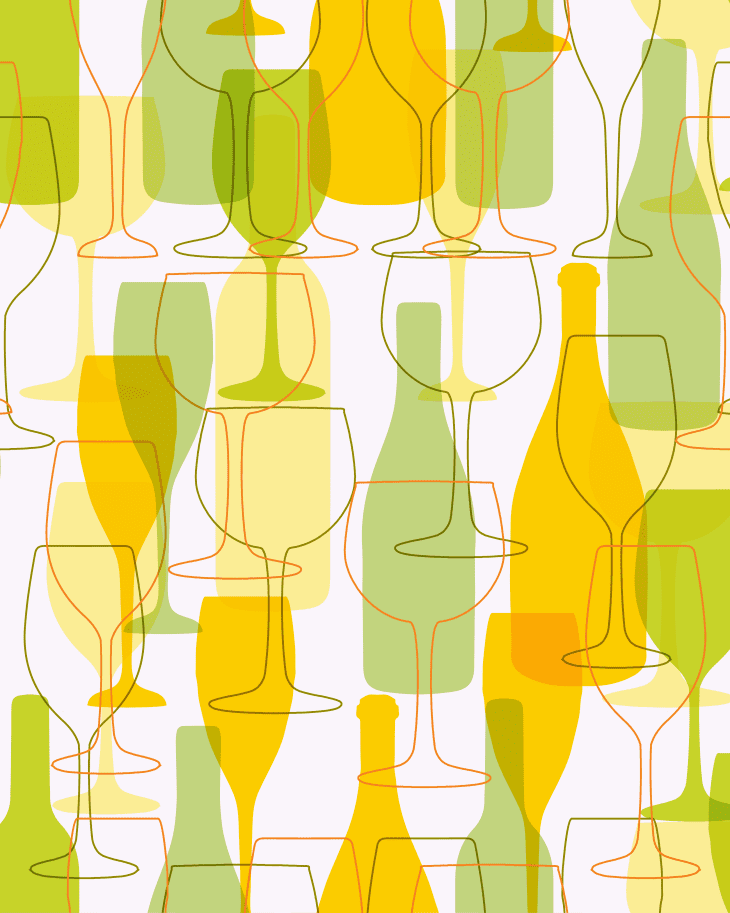Why It’s Time to Reconsider California Chardonnay
Chardonnay is like Kim Kardashian: loved, loathed, and everywhere. We can’t seem to get enough of this butter bombshell, which has maintained its position as the leading varietal of wines for the last decade. Nowhere is this more true than in California, where Chardonnay is the most widely planted wine grape. In 2014, the state crushed 718,000 tons of Chardonnay and shipped 54 million cases to the rest of the United States.
Lately, though, Chardonnay has been showing us another side, casting aside its oaky, popcorn-scented image and reinventing itself as complex and nuanced. It’s prime time to reconsider the queen of whites.
The Rise of California Chardonnay
First, let’s take a look at how Chardonnay ascended to its throne. It really started with the 1976 Judgement of Paris. Napa wines beat out their French counterparts in a head-to-head blind tasting, and Chardonnay was deemed the queen of Napa Valley wines.
This era also saw an increased awareness of wine in the United States. Consumers began buying wine by grape variety instead of region. In other words, they started asking for Chardonnay by name.
As demand for the grape skyrocketed, Chardonnay rapidly began to dominate plantings across American vineyards, and the opulent style of Napa Valley became synonymous with American Chardonnay — and indeed fine white wine.
Chardonnay Is Easy
It didn’t hurt, either, that Chardonnay can grow pretty much anywhere — especially under the umbrella of the Golden State’s signature sunshine. There’s basically never a Chardonnay shortage, nor underripe grapes that can’t be made into luscious, full-bodied wines.
What’s more, Chardonnay is also inexpensive to make — or it can be. Most supermarket Chardonnay isn’t meant to age, which means winemakers don’t need pricey oak barrels to produce the toasty trademark Chardonnay. Instead, they use oak chips or other additives to contribute flavors in a fraction of the time. As a result, Chardonnay can go from grape to glass in less than a year — and cheaply.
The Backlash Against Chardonnay
The reign of big, buttery Chardonnays persisted through the 1990s and early 2000s when the “ABC” or “Anything but Chardonnay” club started gaining steam. This reactionary movement promoted lighter, more food-friendly styles of wine like Riesling, Sauvignon Blanc, and Chablis, France’s lean and mineral Chardonnay counterpoint.
In recent years, the availability of inexpensive European wines has also challenged the status of bold California Chardonnay as a household staple. Simply put, there’s more to choose from. French and even Australian Chardonnays have crept onto store shelves, enticing drinkers with zippy, lemony acidity and creamy tones that are luxurious without being heavy.
Finally, as far-flung cuisine becomes more mainstream on American menus (Sriracha is the new ketchup, after all), wines without the heavy oak signature of classic American Chardonnay, like the ones championed by ABC drinkers, have gained market share, and continue to do so. More delicate flavors, more restrained use of oak, and higher acid simply make better pairings with many dishes.
The Brave New World of Chardonnay
Today, domestic Chardonnay makers are getting the message, and the result is refreshing, mouthwatering wine that speaks of its California terroir. Regions of California including the Central Coast, Mendocino, and Santa Cruz Mountains, and even parts of Napa, are championing this style, and already reaping the rewards.
Alongside food, or even solo, they truly showcase the versatility of Chardonnay, in all of its butter-free glory. Lacking in sharp characteristics, like high acid or trademark flavors, Chardonnay is actually the perfect receptacle for a winemaker’s signature.
A greater focus on picking grapes earlier means higher acid in the resulting wines, while judicious use of oak, or none at all, yields a shockingly different type of Chardonnay. Lean, zippy, and with more golden apple and citrus flavors than its popcorn- and pineapple-dominant predecessors, these new Chardonnays are more Taylor than Kim.
We’ll always have a place for big Chardonnay in our hearts, but variety — and perhaps flexibility — are the spices of life, after all.
